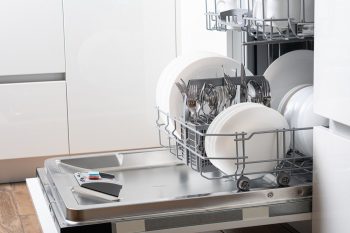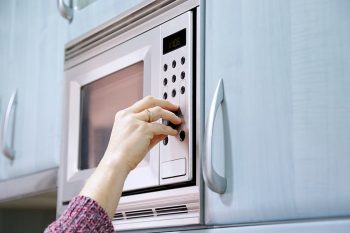
A washing machine that isn’t rinsing properly can be a major inconvenience. When clothes come out of the wash still soapy or with detergent residue, it’s clear something isn’t right. But what causes this issue and how can you fix it? In this comprehensive guide, we’ll explore the ins and outs of why your washing machine might not be rinsing, and provide actionable solutions to get your appliance back in top shape.
Your washing machine may not be rinsing due to reasons such as overloading the machine, using too much or the wrong type of detergent, a clogged or malfunctioning drain pump, a clogged or bent drain hose, or a malfunctioning switch or control board. You can troubleshoot by checking your load size, reviewing your detergent usage, inspecting the drain hose, cleaning the pump filter, and checking water pressure. If the problem persists, it’s recommended to call a professional.
The Rinse Cycle: How It Works
Before we delve into the issues, let’s briefly go over how the rinse cycle works in a washing machine. The rinse cycle is designed to wash away the detergent and any remaining dirt after the wash cycle. The machine drains the soapy water, then refills with clean water. This clean water, often combined with spinning, helps rinse the soap and dirt out of the clothes.
Common Causes of Rinse Issues
Several issues can lead to a washing machine not rinsing properly. Here are some of the most common:
- Overloading the washing machine: When you overload the machine, detergent can get trapped in the folds of your clothes and may not dissolve completely. This can cause residue to be left on your clothes after the rinse cycle.
- Using too much or the wrong type of detergent: If you use too much detergent or a type not suited to your machine, it can lead to a buildup of soap, causing rinsing issues.
- Clogged or malfunctioning drain pump: If the drain pump is clogged or not functioning correctly, it can prevent the machine from draining the soapy water properly, leading to incomplete rinsing.
- Clogged or bent drain hose: The drain hose is responsible for removing water from the machine. If it’s clogged or bent, it could restrict the flow of water, preventing proper rinsing.
- Malfunctioning switch or control board: If the switch or control board is faulty, the machine might not move into the rinse cycle at all or stop before it’s completed.
Troubleshooting Rinse Issues
If you’re experiencing rinse issues with your washing machine, here are some steps you can take to troubleshoot:
- Check your load size: Make sure you’re not overloading your machine. Refer to your user manual for the appropriate load size.
- Review your detergent usage: Make sure you’re using the correct amount and type of detergent for your machine. Too much can lead to residue, while the wrong type can cause buildup.
- Inspect the drain hose: Check the drain hose for any clogs or bends and fix them if necessary.
- Clean the pump filter: The pump filter should be cleaned every three months or when it’s clogged.
- Check water pressure: Sufficient water pressure is needed to remove detergent from the drawer. If the pressure is too low, you may need to contact a plumber.
If you’ve tried these solutions and your washing machine still isn’t rinsing properly, it’s time to call in a professional.
When to Call a Professional
If you’ve tried troubleshooting and the problem persists, it’s time to call a professional. If the drain pump is broken or clogged, the drain hose is clogged or bent, or the switch assembly is broken, these are issues best left to professionals to avoid causing further damage to your machine.
Preventive Maintenance Tips
Here are some maintenance tips to prevent future rinse issues:
- Use the correct detergent: Regular detergent creates too many suds for high-efficiency machines, which can affect the machine’s rinsing performance.
- Avoid overloading: Overloading can cause detergent to get trapped in the creases of your clothes and not dissolve completely.
- Clean the lint filter: Regularly clean the lint filter to keep the machine running efficiently.
- Clean your washing machine: Run a washing machine cleaner through the machine every month or so to remove soap residue and buildup.
By following these tips and understanding the common causes of rinse issues, you can ensure that your washing machine operates efficiently and your clothes come out clean and free of residue every time.
Frequently Asked Questions
What type of detergent should I use for my high-efficiency washing machine?
For high-efficiency washing machines, it’s best to use a detergent that’s labeled as “HE” (High Efficiency). These detergents create fewer suds and are capable of providing a thorough clean with less water.
How often should I clean the lint filter in my washing machine?
The lint filter in your washing machine should ideally be cleaned after every wash. Regular cleaning helps in maintaining the efficiency of your machine and prevents any potential clogs in the drainage system.
How can I tell if my washing machine is overloaded?
As a general rule, your washing machine is likely overloaded if you can’t fit your hand into the drum on top of your laundry. Overloading can prevent clothes from moving freely, which inhibits the cleaning process and can leave detergent residue on your clothes.
What is the correct way to load a washing machine?
When loading your washing machine, make sure that clothes are evenly distributed around the drum and not just piled in the middle. This helps to maintain the balance of the machine during the spin cycle and ensures a more effective rinse.
How can I prevent my drain hose from getting bent or clogged?
Regularly check your drain hose for any kinks or bends and straighten them out. Also, ensure that there is enough space behind your washing machine so that the hose isn’t squashed. To prevent clogs, regularly clean the hose using a long brush or a vacuum.












